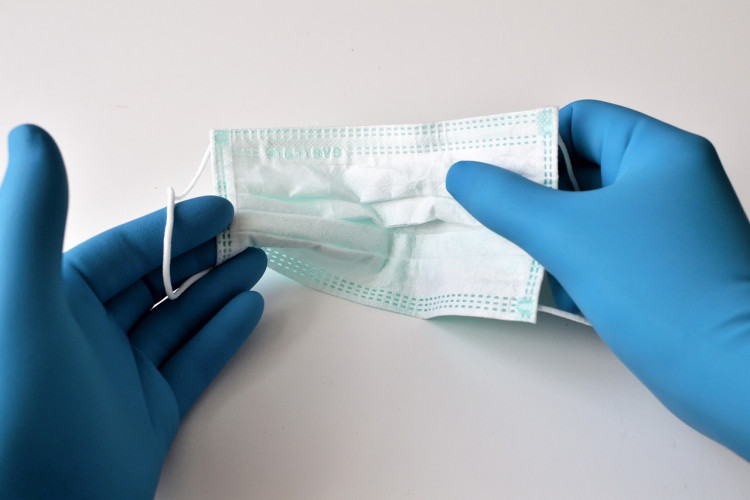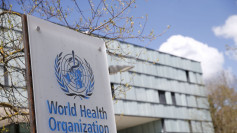The United States is currently experiencing a significant summer surge of COVID-19, with the virus detected at "very high" levels in 21 states according to the Centers for Disease Control and Prevention's (CDC) wastewater monitoring system. The affected states include Alaska, California, Colorado, Connecticut, Florida, Hawaii, Idaho, Louisiana, Maryland, Minnesota, Nevada, New Hampshire, New Mexico, North Carolina, Oregon, Texas, Utah, Vermont, Washington, West Virginia, and Wyoming, along with the District of Columbia.
Additionally, 14 states have been identified as having a "high" presence of the virus. This surge is not just confined to wastewater data; the CDC also reports a rise in positive COVID-19 tests, which have increased to 12.6% from 11.4% the previous week. Only New York has reported "low" levels of the virus in its wastewater, while other states fall into the "moderate" category, except for North Dakota, which has not reported any data.
Wastewater surveillance, which the CDC employs to detect early signs of COVID-19 spread, has proven to be an efficient method for tracking disease trends. "Toilet flush to results only takes about five to seven days," the agency noted, emphasizing the rapid turnaround of this data collection method.
This summer spike has historical precedents. "When we're outdoors, it's difficult for COVID to transmit, but it's been so oppressively hot, particularly in the Southwest United States, and people are just spending a lot more time indoors," explained Andrew Pekosz, a professor of microbiology at the Johns Hopkins Bloomberg School of Public Health. This year's wave is primarily driven by new COVID variants KP.2 and LB.1, subvariants of the highly infectious Omicron strain, which account for over 90% of new cases.
Compounding the issue, vaccination rates have waned, with only 22.5% of adults receiving an updated COVID vaccine since last September. In response to the emerging variants, the Food and Drug Administration (FDA) has advised vaccine manufacturers to target the KP.2 variant, with updated vaccines expected by the fall.
The spike in COVID-19 cases is not only reflected in wastewater data but also in the increasing rates of emergency room visits and hospitalizations, although death rates have remained stable. Michael Hoerger, Ph.D., assistant professor at Tulane University School of Medicine, and leader of the Pandemic Mitigation Collaborative, warns that the current wave is likely to peak around September 11 with an estimated 1.2 million new cases per day. "We're probably somewhere between a quarter of the way through the wave to 40%, 50%, if we're lucky," Hoerger stated.
The CDC's shift away from tracking total new COVID-19 cases to focusing on indicators like test positivity and emergency department visits reflects a broader strategy to manage the virus. "Levels are lower than the peak from this past winter and are at similar levels to the early fall peak in 2023," a CDC spokesperson noted.
William Schaffner, a professor of infectious diseases at Vanderbilt University Medical Center, remarked, "Unlike influenza, which essentially disappears during the summertime, COVID-19 never goes away." This perpetual presence, combined with summer social activities and travel, has facilitated the spread of the virus.
The current variants, including KP.3, KP.2, KP.1.1, and LB.1, have spike protein mutations that allow them to evade immunity more effectively than previous strains. These mutations, along with declining population immunity and low booster uptake, contribute to the rise in cases.
States in the West, Southeast, and parts of the Mid-Atlantic and New England regions are seeing the highest rates of COVID-19. "(COVID) is up everywhere. It's not as though you could go to a state and avoid this increase. It's just that the increase is more prominent in some parts of the country than others," Schaffner noted. Hoerger added that wastewater surveillance serves as an early warning system, helping communities prepare for rising COVID-19 levels.
In response to the surge, the CDC recommends several precautionary measures: wearing high-quality masks in crowded indoor areas, staying up to date with vaccinations, testing if symptomatic or exposed, improving ventilation, and practicing social distancing. These steps are especially crucial for high-risk groups or those in close contact with vulnerable individuals.
"Every day of 2024 remaining is likely to have more transmission than today," Hoerger emphasized. "People should really be taking the rest of the year very seriously."





